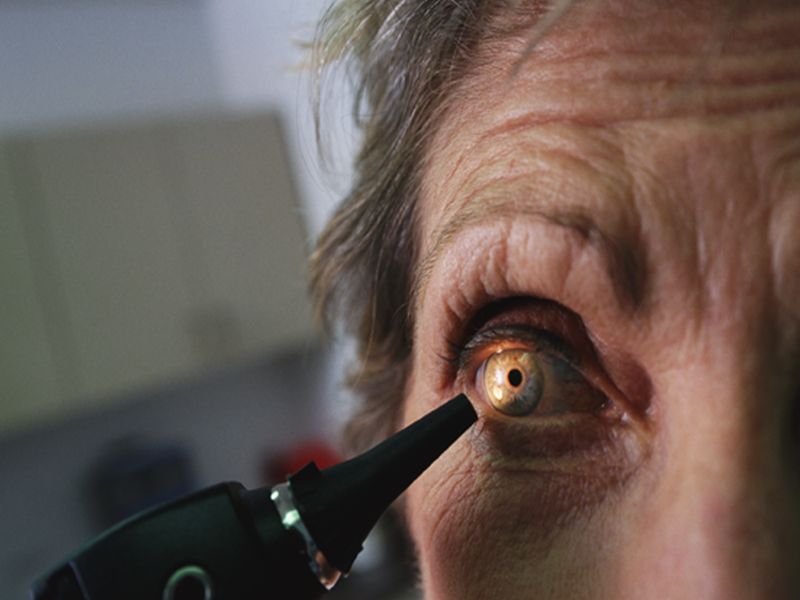
Stem cells may offer new hope for people losing their vision to age-related macular degeneration, but that promise can come with some peril, new research shows.
In one report, three older women were permanently blinded at a Florida eye clinic that performed unproven stem cell treatments on their eyes in 2015, said senior study author Dr. Jeffrey Goldberg. He’s chair of ophthalmology for the Byers Eye Institute at Stanford University in Palo Alto, Calif.
The women all thought the stem cell therapy was part of a clinical trial, but there’s no evidence that a genuine clinical trial was taking place, Goldberg noted.
“It appears the patients were lured in with the promise of a research protocol and it’s not clear that they were actually signed up for any research,” Goldberg said. “They were just injected with these cells of some sort.”
The women, aged 72 to 88, each paid $5,000 for the procedure, which should have been a red flag, Goldberg said. Clinical trials typically do not charge patients a fee.
The study appears in the March 16 issue of the New England Journal of Medicine.
But stem cells do hold real promise for the treatment of macular degeneration, a leading cause of vision loss among people aged 50 and older, Goldberg said.
A second article in the same journal issue detailed a legitimate effort to restore the sight of a 77-year-old Japanese woman with macular degeneration using stem cells.
Macular degeneration occurs when either age or illness causes damage to the macula, a small spot near the center of the retina, according to the U.S. National Eye Institute. This part of the eye is crucial for sharp central vision, to see objects right in front of you.
“The cells responsible for vision degenerate, and they’re not replaced as part of the natural healing process in humans, or other mammals for this matter,” Goldberg said. “The hope of stem cells is that they’ll replace the cells that have degenerated and restore vision in these all-too-common and debilitating diseases.”
In the Japanese pilot study, doctors grafted a new sheet of retinal tissue derived from stem cells into the right eye of the female patient.
One year after the operation, the patient’s vision stabilized and her eye appears to have accepted the graft with no serious side effects, researchers reported.
Results like these show that stem cell therapy “definitely is worth pursuing using the correct channels,” said Dr. Ronald Gentile, director of the Ocular Trauma Service and surgeon director at the New York Eye and Ear Infirmary of Mount Sinai.
Unfortunately, it appears some eye clinics are trying to cash in on the desperation of people losing their sight to macular degeneration, Goldberg and Gentile said.
The three women treated in Florida received injections in both eyes of a blood plasma slurry containing stem cells derived from their abdominal fat. The entire process of removing the fat from their bodies, refining it into stem cells, and then injecting those stem cells into their eyes took less than an hour, the researchers said.
Within a week, the patients experienced a variety of complications that included vision loss, detached retinas and bleeding. All are now blind, and it’s extremely unlikely they will regain their vision, Goldberg said.
The Florida stem cell treatment was presented as a clinical trial on a registry and results database run by the U.S. National Library of Medicine, the researchers said.
Although still visible on the government website, the listing now states: “This study has been withdrawn prior to enrollment.”
In addition to charging a fee for treatment, there were several other red flags in the Florida cases that consumers should watch for when considering participation in a clinical trial, Goldberg said.
The patients should not have had both eyes treated at once. Most doctors would only treat one eye to see how it responds to an experimental treatment before attempting the other eye. Even proven and time-tested surgeries like cataract removals are performed one eye at a time, Goldberg said.
Other troubling aspects: The consent form and other written materials given to the patients did not mention an actual trial, the study authors said.
In addition, the treatment lacked nearly all of the components of a properly designed clinical trial, Goldberg said — no hypothesis based on previous lab experiments, no control group and no apparent plans for follow-up.
People need to maintain a solid skepticism regarding the immediate promise of stem cell therapy, Gentile said.
“As a consumer you will be led to believe this is the best thing since sliced bread,” Gentile said. “There is so much hype with stem cells as a cure for aging and disease. Consumers suffering from certain diseases are desperate and take desperate measures.”
At this point, Goldberg noted, there is no FDA-approved stem cell treatment for age-related macular degeneration.
People considering experimental stem cell treatment should get a second opinion from a trusted doctor, particularly if it’s part of a purported clinical trial that isn’t associated with any university or academic medical center, Goldberg said.
More information
For more about macular degeneration, visit the U.S. National Eye Institute.
Source: HealthDay

Leave a Reply